We’re back with another week of the PLV report. This series will use the PLV metrics to contextualize player performance, and this week we’ll use our PLV model (Nick’s primer on PLV from last year can be found here) to validate some early-season pitching performances. PLV allows us to dig into individual pitches as needed, or to analyze how a pitcher’s repertoire works holistically. When showing Pitch Type cards, there will also be a plvLocation+ score shown, which is modeled similarly to PLV, but only uses the end locations of the pitch (horizontal, vertical, and location within the specific hitter’s strike zone) as inputs. With that information, we also can make Hitter PLV metrics which adjust a hitter’s decisions and performance based on the quality of the pitches they’ve faced. We’ve recently added a new hitter metric, Process+, which combines our hitter stats into a single, per-pitch value metric.
Note: PLV metrics listed are current through Wednesday, July 31st.
Big Fish
One of the biggest pieces to move this trade deadline is Randy Arozarena, from the Tampa Bay Rays to the Seattle Mariners. Mentioned in the last two weeks of this series, Arozarena has really put it all together recently.
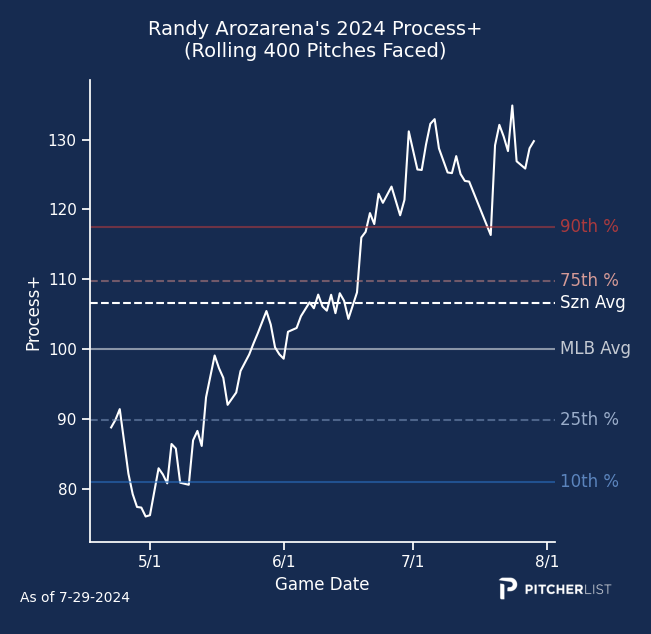
This increase is driven almost entirely by him tapping back into his power stroke, which shows a nearly 1:1 correlation with the Process chart above. The Power increase is also showing up on the field, with Arozarena running a 0.372 ISO over the past 15 days.
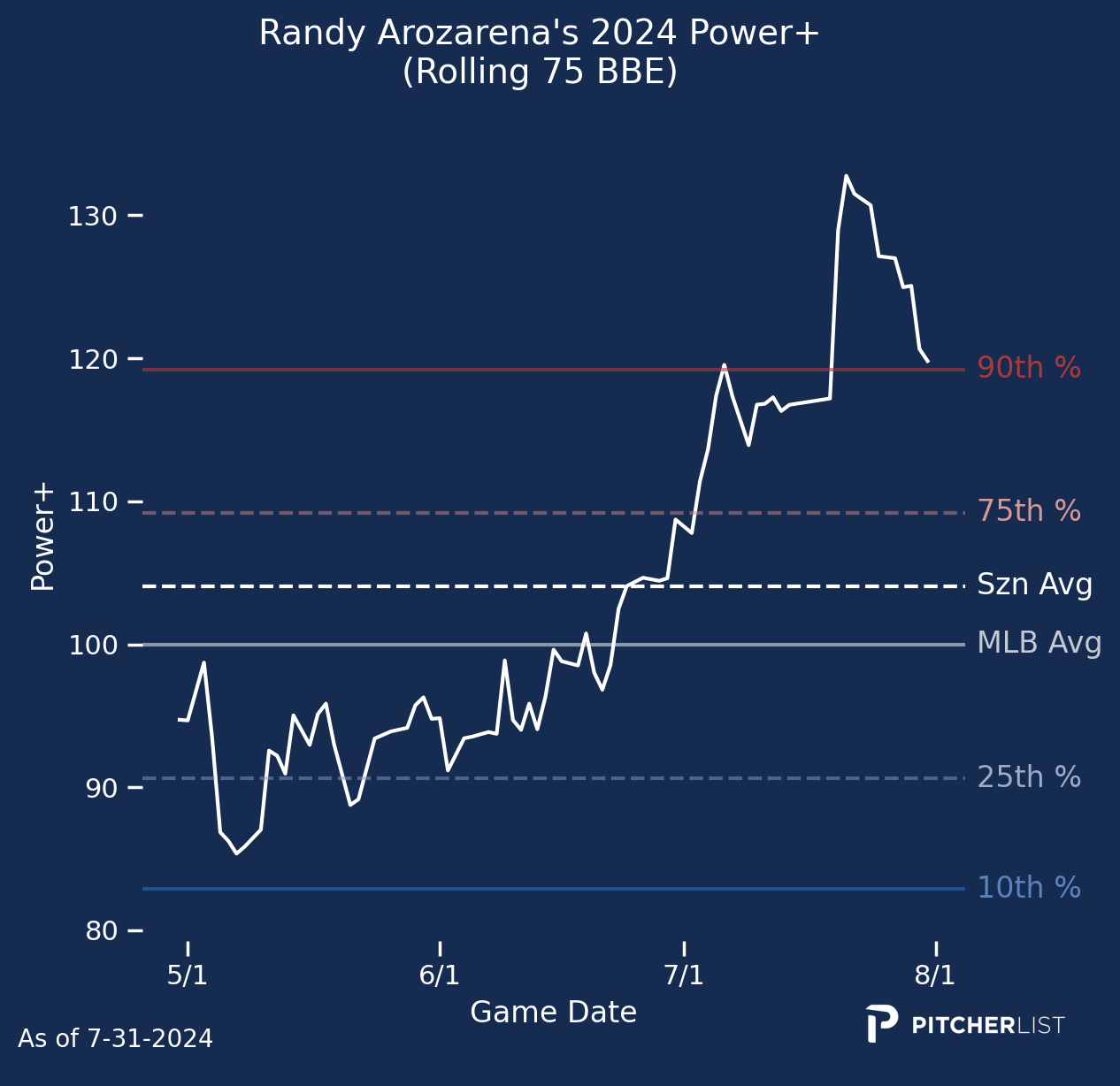
Arozarena has the historical performance, the talent, and now the results to make the Mariners quite pleased (especially with Julio Rodríguez injured).
Ryan featured Kikuchi last week, but I want to focus on his best pitch: the Curveball. Kikuchi does a great job of dropping the pitch in the low and arm-side corner of the strike zone. That’s a great spot if you can hit it consistently, and Kikuchi has shown he can.
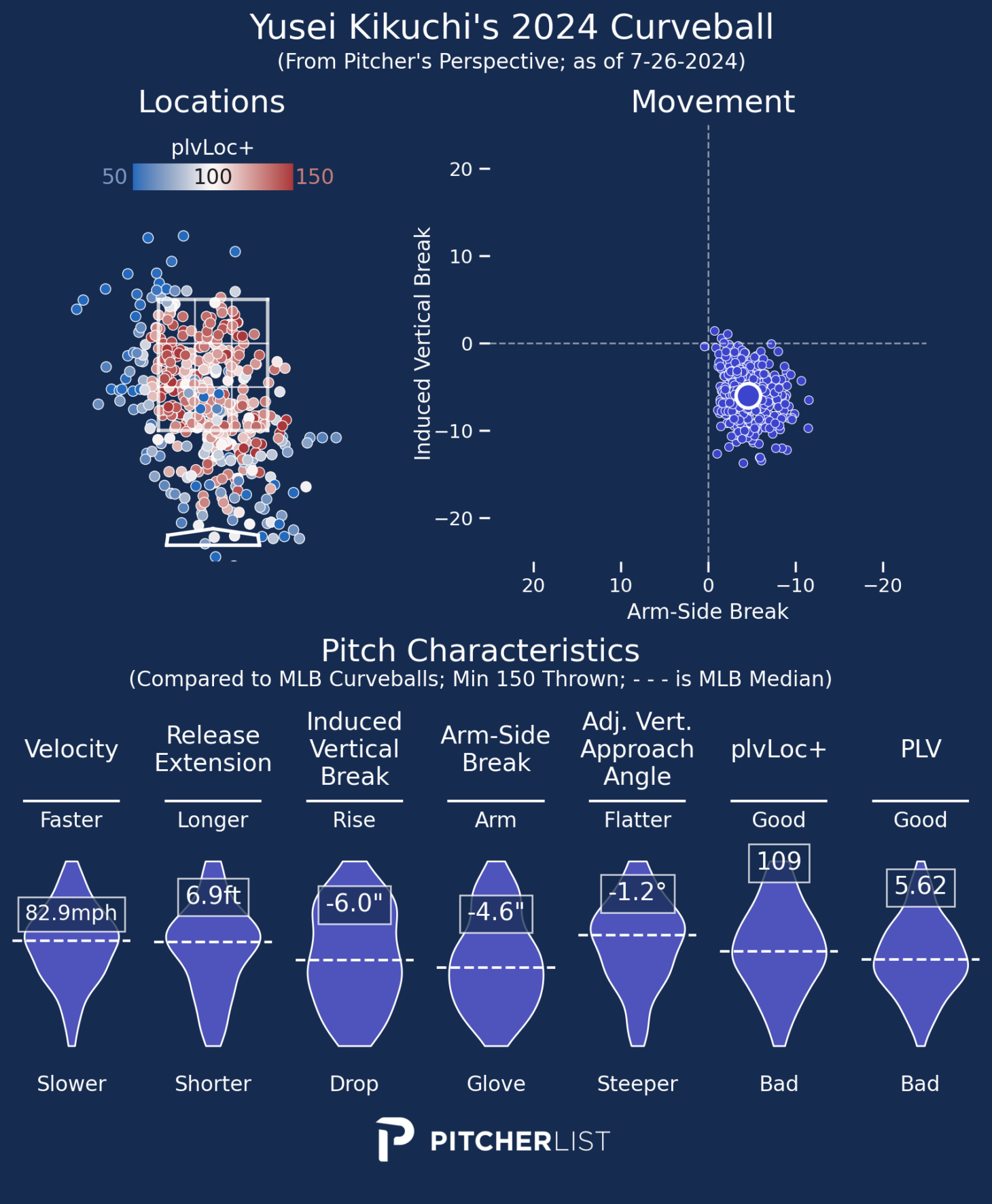
The pitch has run an above-average CSW% (33.3%) but has been hit a bit harder than you’d like to see (0.361 xwOBACON; 47th percentile). I believe the pitch can maintain its plus Called Strike% and Swinging Strike% (58th and 57th percentile, respectively), and I’d look for the batted ball results to trend in a better direction.
Pitch models love Kikuchi: at the time of writing, he’s 10th among starters by PLV, fifth by Pitching+, and 15th by PitchingBot’s botOvr grade. The Astros are a smart org, and they see something with Kikuchi that aligns with the pitch models’ affection. For their sake, I hope he’s worth the return they traded away for him.
The Dodgers beat the buzzer, dealing for Flaherty at the very end of the deadline. He’s a great example of a good process backing up quality results. Flaherty has three pitches that are better than average, with his Four-Seam, Slider, and Curveball all being plus for their types (as seen a few weeks ago). I want to look at the Four-Seam, which is his most used pitch, and for good reason.
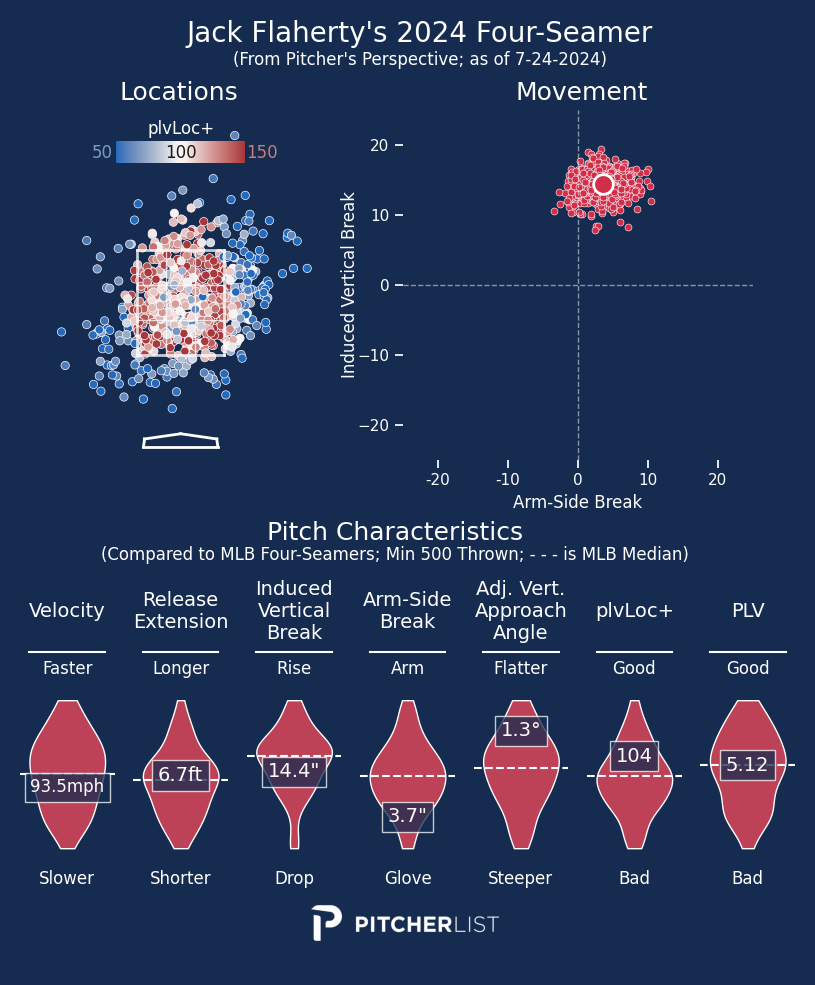
PLV is lukewarm on the pitch, mostly because he has a bit of a tendency to miss up and arm-side, which is especially easy to lay off for right-handed hitters. Nevertheless, he has a positive location value, thanks to his ability to attack the corners (22.7% Called Strike rate; 94th percentile). That’s an especially valuable trait when he uses it in two-strike counts (26% Putaway Rate; 97th percentile), which he does fairly often (31.6% 2-strike Usage%; 67th percentile).
The Yankees brought some smooth Jazz to the Bronx. In addition to positives he brings outside the batter’s box (he’s only 26, has team control until 2027, is versatile defensively, and brings value on the basepaths), Chisholm has also shown recent improvements at the plate. Of note is his upward-trending Decision Value.
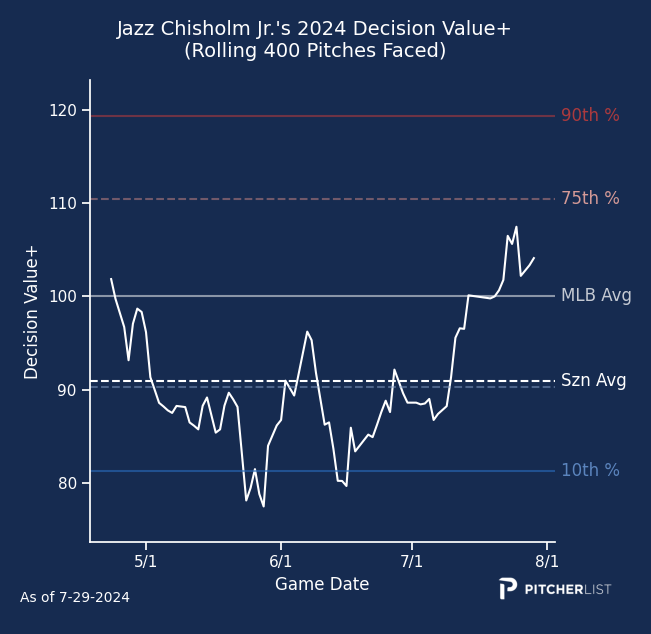
That’s a particularly useful skill for the Yankees, who have plenty of power bats but have been looking for a table-setter in front of Juan Soto and Aaron Judge. If Chisholm’s Decision Value can remain average-to-plus, that will get him plenty of opportunities for Runs, in front of two of the best hitters in baseball. The upside is immense for a leadoff hitter who makes good decisions, has speed and instinct on the bases, and has the best 2-3 hitter combo behind him.
Clever Pickups
Kopech undeniably has some of the best stuff in baseball. His Four-Seam Fastball may be the nastiest in the majors, with 98th percentile velo, 91st percentile IVB, 98th percentile spin, and 82nd percentile Height-Adjusted VAA (HAVAA). The problem is that everyone knows it’s coming (78.7% usage rate) and everyone knows it probably won’t be in the zone (47.6 Zone%; 2tth percentile). The Dodgers are a smart org. They know you can’t succeed as a one-pitch pitcher, even when the one pitch is nasty. Cue an increase in his Cutter usage (6/17 pitches thrown in his first game for the Dodgers, for a 35% usage rate).
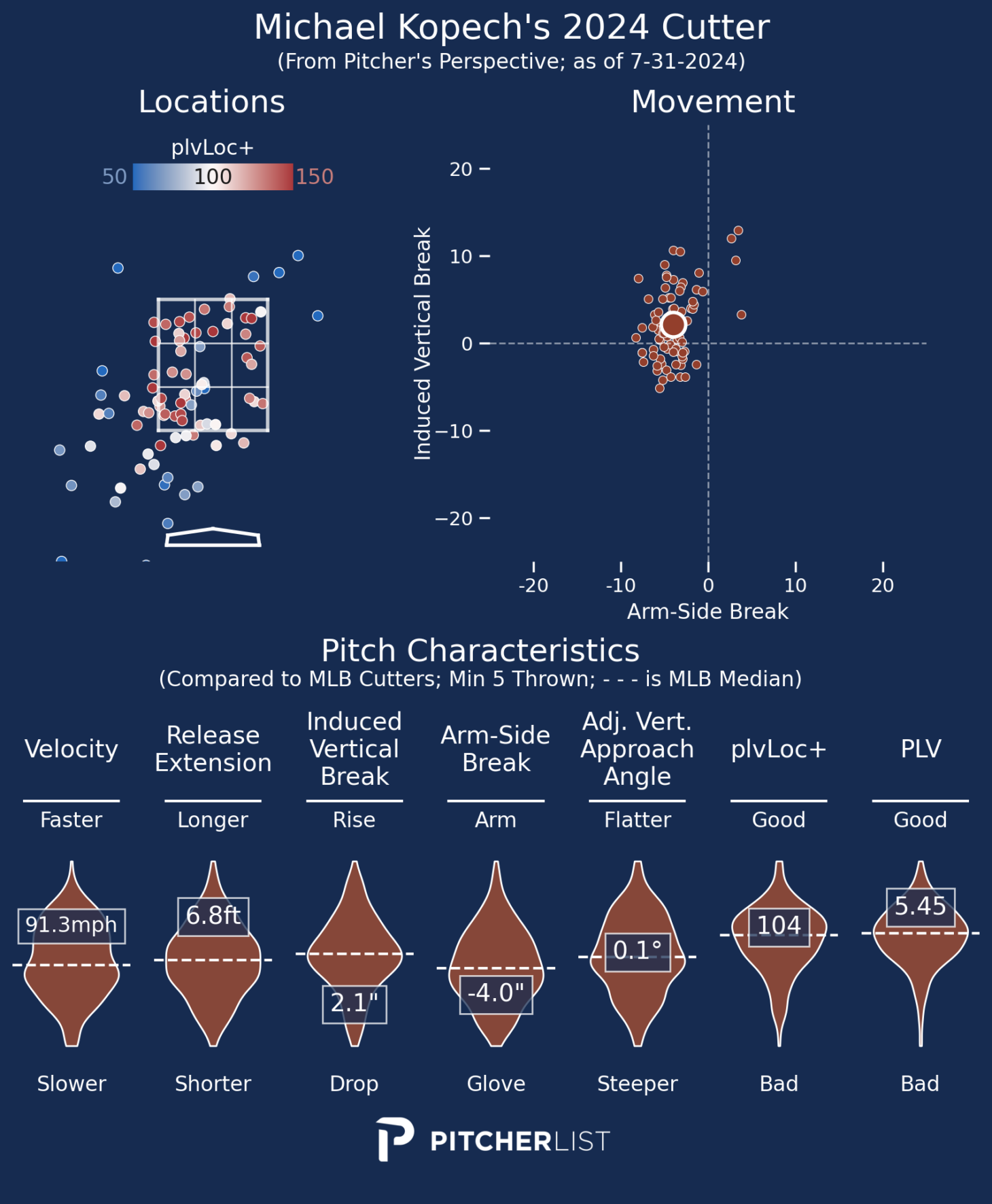
The Cutter is good enough that, even though it’s “worse” than his fastball, using it more often may actually help him. It’s a small sample, but he’s flashed much better control with the Cutter, and it still has wicked stuff (not many pitches are both over 90 mph and have a 7+ mph drop from the primary fastball). If the Dodgers convince him to lean into a slightly more diverse (and command-able) repertoire, they might end up with one of the most potent relief options in baseball.
The Braves saw Soler’s extremely recent improvements and jumped on the opportunity to trade for him.
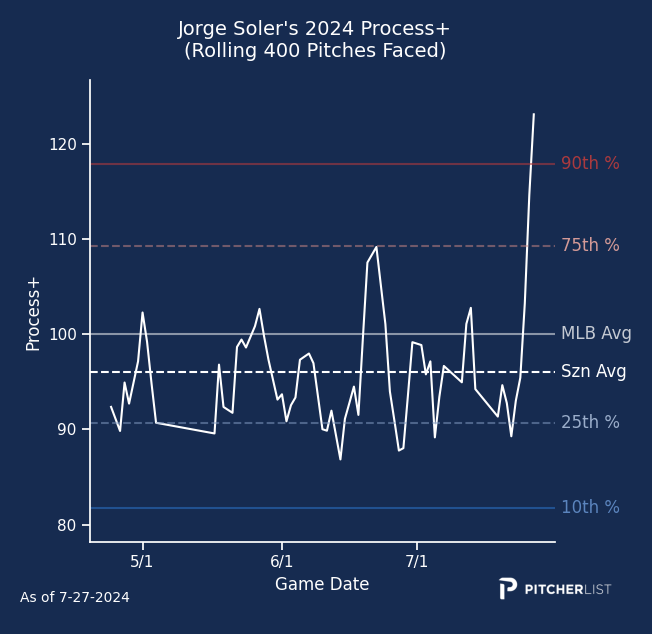
As we saw with Randy Arozarena above, big swings in Process stem from big swings in Power. The same is true here, though Soler also has a massive spike in his decision-making.
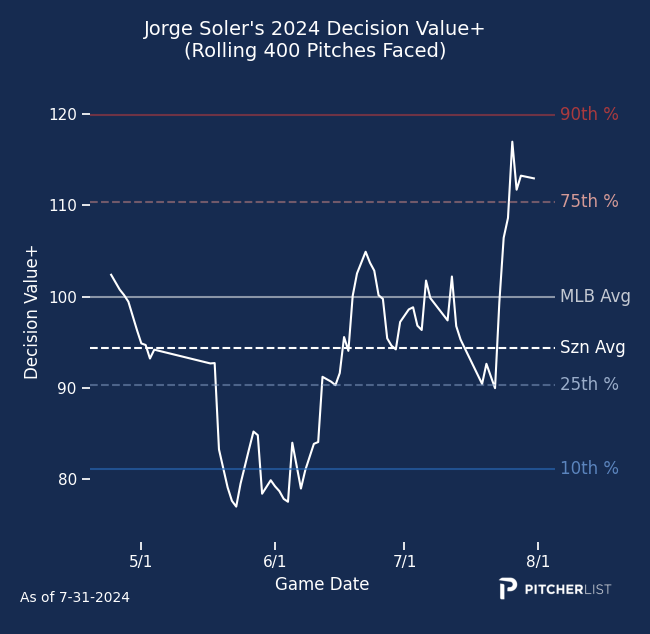
It remains to be seen if these recent and extreme spikes can stick around. If they do, the Braves may have picked up an impact bat for pennies on the dollar.
The Phillies might’ve locked down their ninth inning, after trading for Estévez. He has one of the more interesting pitch and location combos in baseball, with his high (36.8% hiLoc%; 98th percentile) and arm-side (27.1% aLoc%; 78th percentile) Slider.
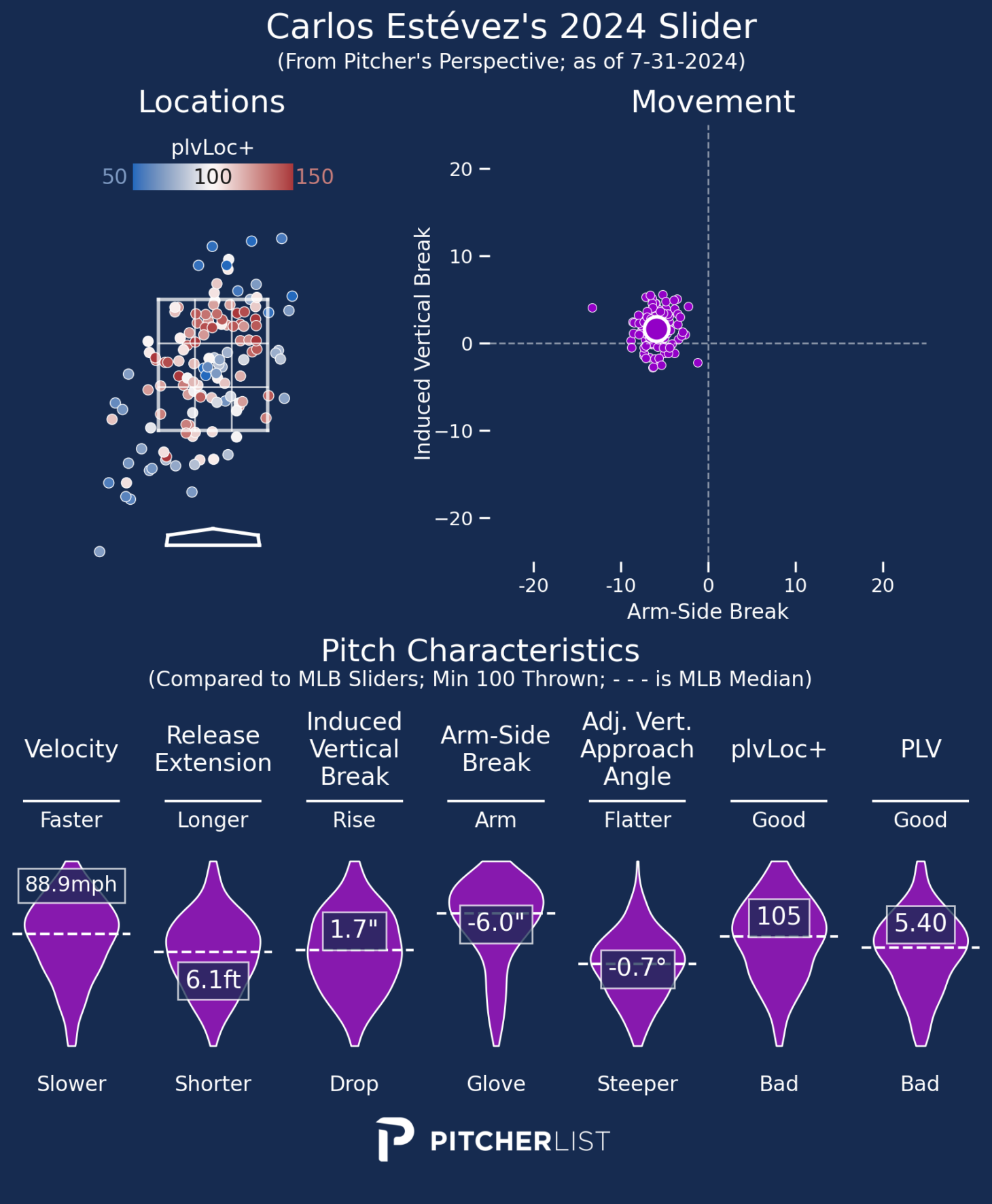
The pitch is the definition of a hard Slider (almost Cutter-like), coming in at 89 mph with fairly little horizontal movement and some slight rise. It is a called strike machine (27.8% Called Strike rate; 97th percentile), likely due to hitters expecting a pitch that fast to just keep on carrying above the zone. It instead drops just enough to fall into the zone. I’ve heard of front-door Sliders, but this looks like a trap door Slider with the way it unexpectedly falls in from above the zone.
Not Traded, More Interesting Now
Miami had a bullpen filled with Stuff monsters, but after shipping out Tanner Scott and AJ Puk, Nardi may be the last one standing. His main pitch is a devastating Slider.
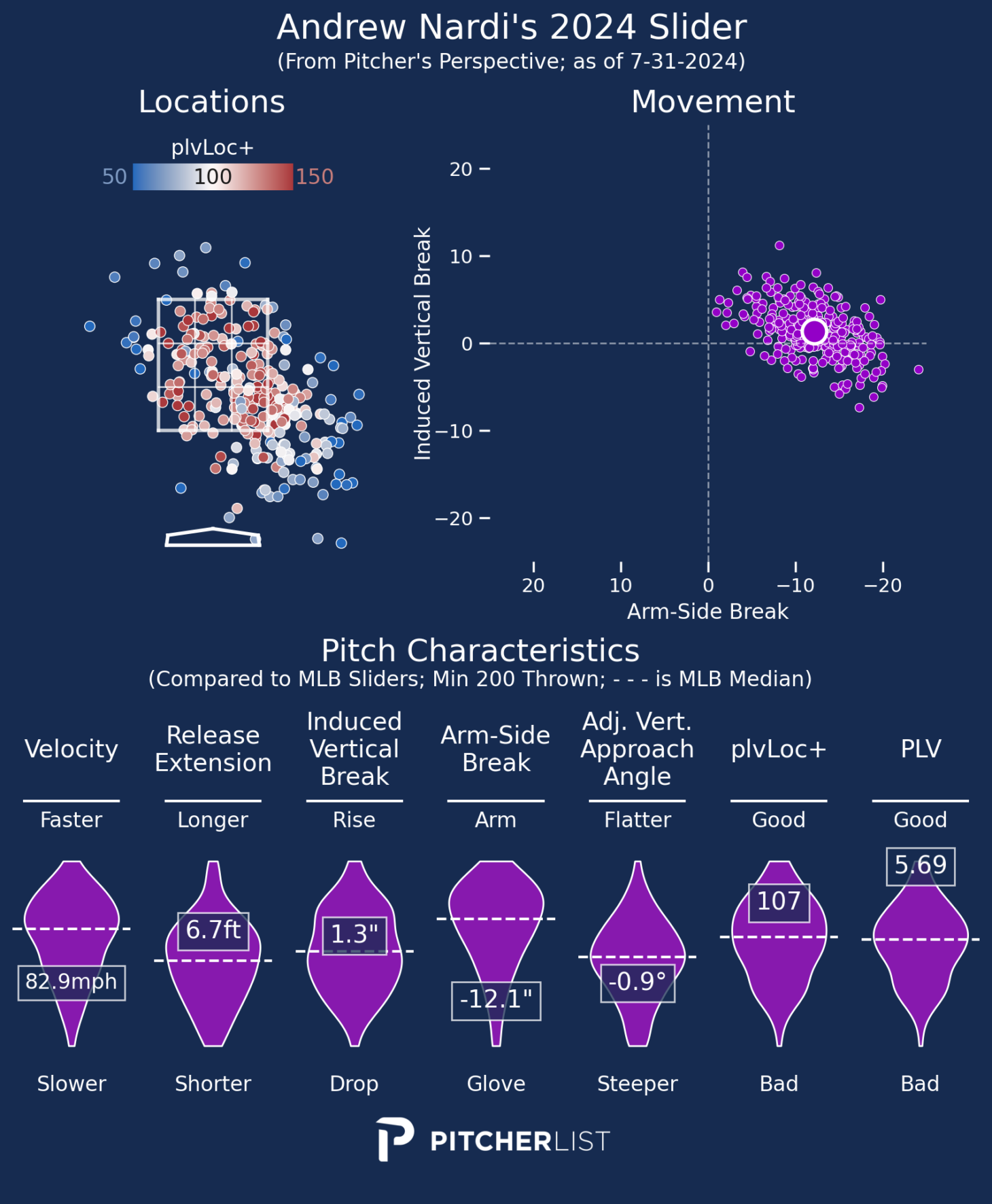
Depending on the day, it can vary between being a more modern Sweeper profile (up to 20″ of glove-side movement) or a more compact, almost gyro Slider (down to <3″ of glove-side movement). When you combine that variability with Nardi’s ability to locate it well, you get a truly dynamic pitch that is constantly fooling hitters (46% O-Swing%; 93rd percentile)
With Yimi García pitching meaningful innings in Seattle, Green is now the de facto closer for the Blue Jays. This isn’t a case of failing upwards on a bad team, though. Green’s Four-Seam is legit and has propelled him to success this season.

Like Nardi’s Slider, Green’s Four-Seam is an O-Swing machine, inducing hitters to chase at a 41.6% clip (96th percentile). Those hacks have led to poor contact results (.169 BAcon; 91st percentile) and an above-average Swinging Strike% (12.1%; 65th percentile). That’s quite a useful combination for closing games out, and Green looks ready to do just that in Toronto.
